HNGRY Summit '24 Threads The Needle Between CPG, Restaurants, & Tech
October 30, 2024
Read Time
11 min

Photography by Brooke Olsen for HNGRY
Last Friday, 100+ food and beverage professionals gathered at ChowNow HQ in Culver City, CA for a day of intimate panels, breakout sessions, and tastings around the future of food sponsored by Tock and Galley. Over the course of the day, we heard from 14 guest speakers, seven breakout session hosts, and tasted products from 10+ brands. The panels covered topics around restaurant tech, automated last-mile and kitchens, alternative proteins, and creativity in CPG. Breakout sessions focused on reframing restaurants, scaling CPG brands, the interplay of grocery and restaurants, the socialization of food retail, smart kitchens, design thinking, and more. Below is a play-by-play of the highlights I gleaned from participating firsthand as well as accounts from other attendees.
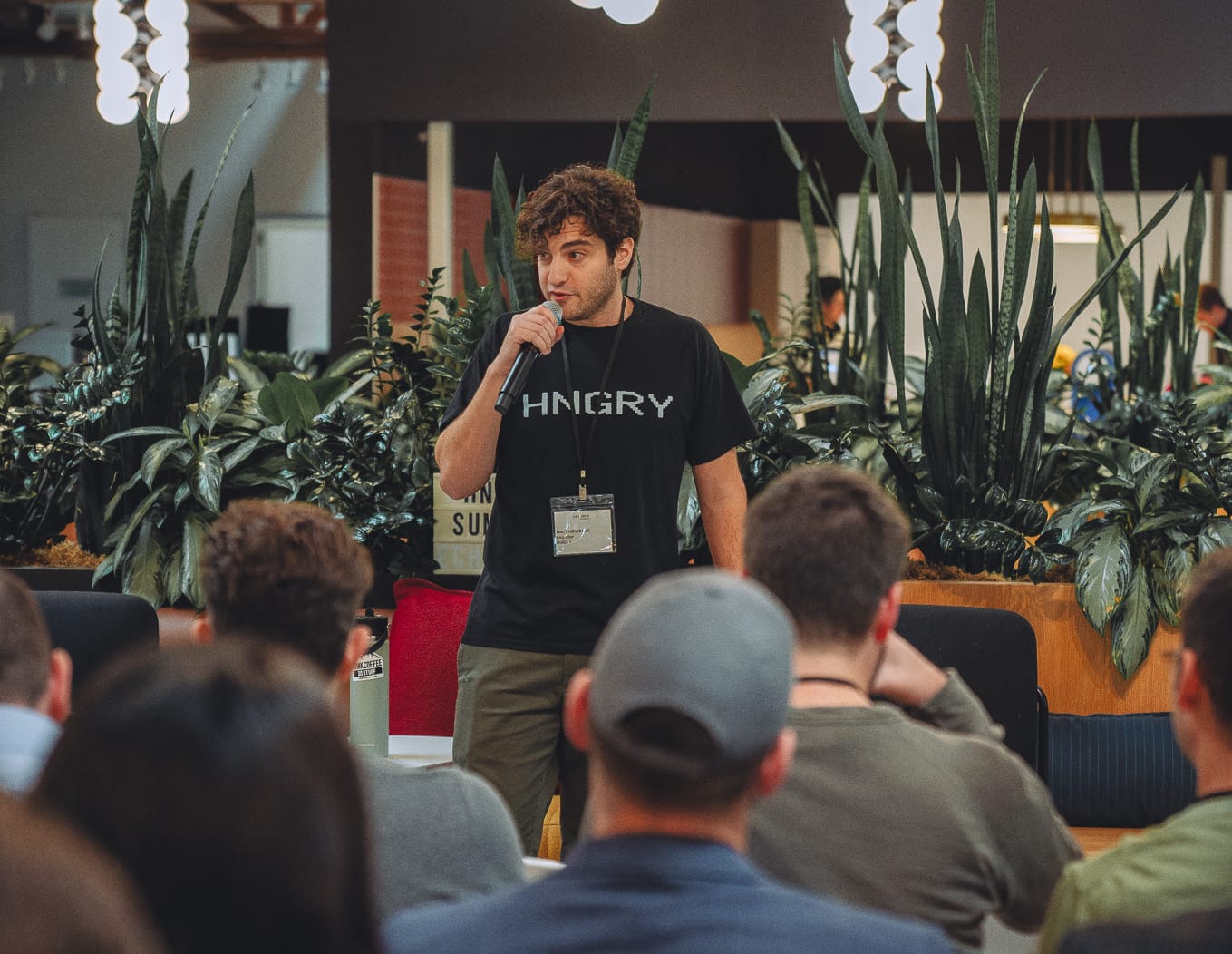
Restaurant tech: painkillers or vitamins?
I kicked the day off with a speech that recounted the massive surge in investment in food tech like quick commerce and vertical farms during the pandemic and the subsequent winter that has continued to play out post-pandemic as the market rationalizes. “During this ZIRP era we saw many outside tech entrepreneurs enter the food space looking to disrupt a massive TAM, many lacking the experience or empathy for the work that all of us do every day,” I waxed. “Some of them thought they could invent a new behavior, like ordering ingredients for a recipe to be delivered as you cook. Some of them thought they could pile onto the messy restaurant tech stack that exists today, offering a new bell and whistle. And a few of them built things that stuck.”
That provided a natural segue to a panel with Square’s Head of F&B Ming-Tai Huh, Head of Tock Matthew Tucker, Saison Hospitality’s Jessica Kapoor, and Expedite’s Kristen Hawley. The conversation began with Kapoor’s recounting of the Saison’s early experience with Covid in late 2019 as it saw fewer foreigners dining at the restaurant and eventually pivoted to a new BBQ takeout concept as its dining room closed. When things reopened, Kapoor explained that guest expectations were difficult to maintain given an entirely new talent pool and higher costs. Both Huh and Tucker addressed various initiatives that Square and Tock took to step up during the pandemic, and their longer term goals of building products with empathy for operators to help them save time and better understand their business in real-time.
Hawley grilled the two technologists about the concept of “inhospitable hospitality” caused by nefarious human behavior like secondary reservation platforms as well as the 24 hour Square outage of 2023. She also asked Tucker about Amex’s recent acquisition of Tock, who responded that while many details have yet to be figured out, Tock will remain a separate brand from Resy. He further vocalized that Squarespace was an unlikely former acquirer of Tock, and restricted investment almost exclusively into backend restaurant experience rather than diners. With Amex’s backing, Tucker is hopeful that he will finally be able to make some improvements to the guest side. During Q&A, he urged operators to understand their dine-in guests better than their delivery customers, offering unique experiences to drive eaters off their couch and back into the dining room.
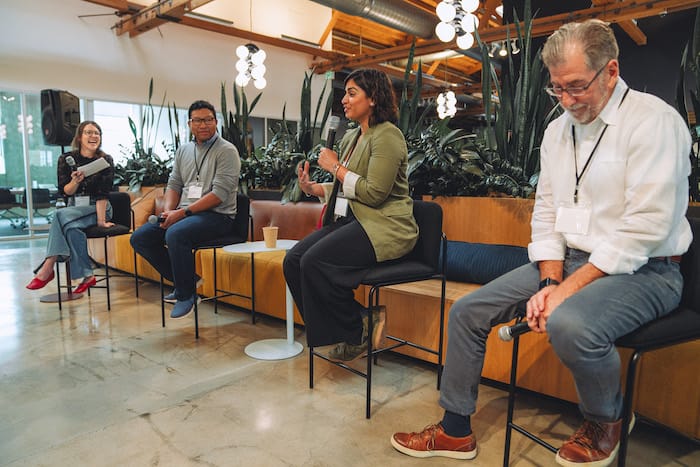
Morning breakouts: reframing restaurants, scaling CPG, and finding your secret sauce
The morning breakout sessions were jam packed with attendees sitting on floors and standing against walls as they brainstormed on Post-It notes and whiteboards. I had the pleasure of sitting in Eli Feldman’s session, “Upgrading the 18th Century Business Model to Modern Day” where attendees were given prompts to reframe the very notion of a restaurant in an era where average profitability is now at ~4%. “Reframing can be used to shift perspective, inspire new ideas and raise new questions,” said Feldman. “We need those in an industry with questionable economics that are getting even harder.”
Some of these ideas included “a ‘last-1/4 mile’ distribution center for global and local food systems” or “local social community hubs” with off-peak wellness events, cooking classes, and matchmaking table service. My team and I came up with a concept of a “personalized kitchen” where restaurants forgo menu items for dishes that are custom-tailored to individual health profiles to provide me the best possible match for my current need state. For example, if I just worked out, the kitchen should automagically produce a high-protein meal. Furthermore, it should also tailor ingredients to individuals’ glucose responses to reduce sugar spikes while also accounting for gut bacteria, blood biomarkers, and sleep/movement tracking data. Feldman posed the question of why technology companies haven’t acquired restaurants to have a real world lab to test new products. He also suggested that they will inevitably copy Netflix’s model of producing original content through the creation of native food brands like DoorDash’s Plentiful or its most recent foray into pre-prepared meals.
Mott Smith of Amped Kitchens hosted a CPG-focused breakout that highlighted the litany of challenges in scaling brands from $500k to $5mm in sales like working capital and logistics. Ellen Bennett of Hedley & Bennett helped operators like Wexler’s Deli hone in on their unique selling propositions. In the case of Wexler’s, she suggested doubling down on its house-smoked fish and meats to differentiate itself from its competitors.
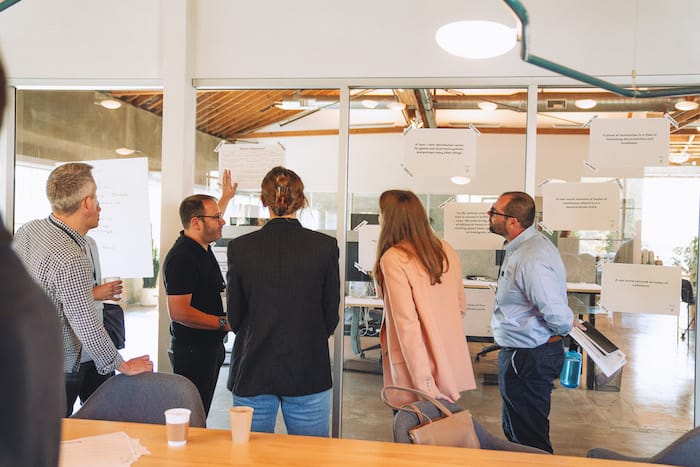
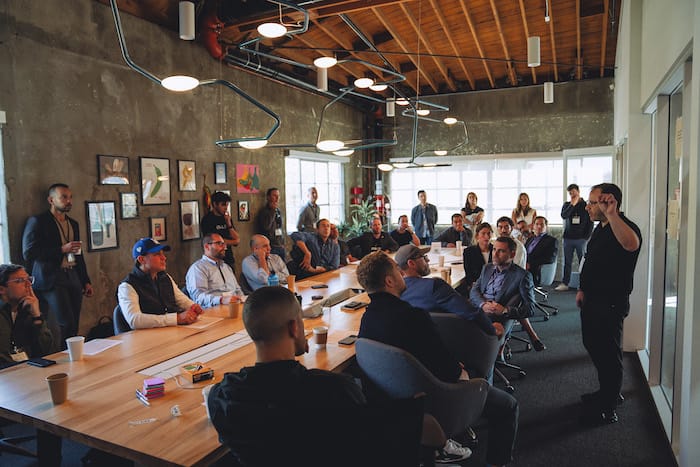
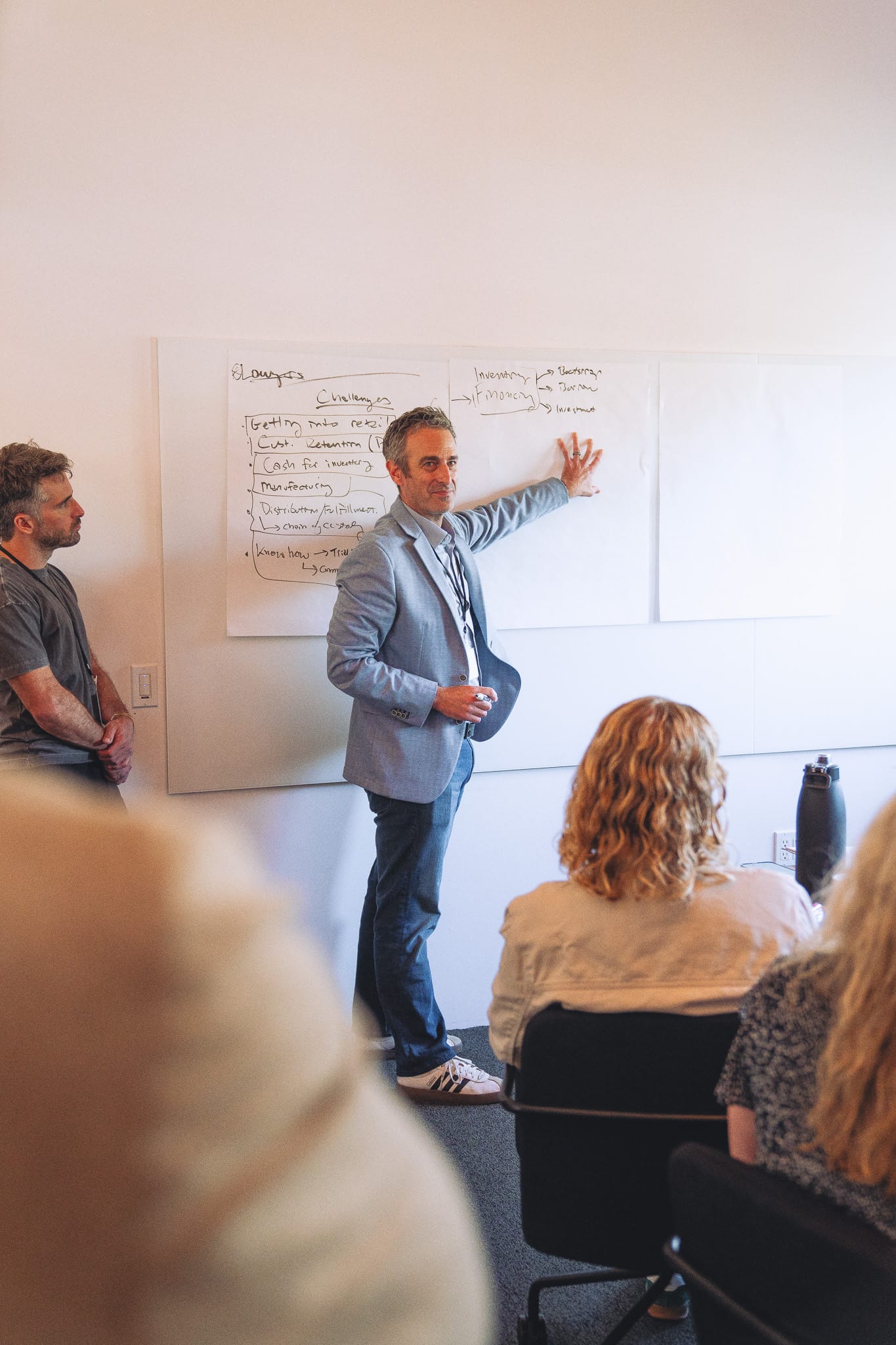

Top: Eli Feldman Bottom: Mott Smith & Ellen Bennett
The growing pains of alt-protein
Technically Food’s Larissa Zimberoff hosted a panel full of hot takes from cultivated, plant, and fungi-based experts like Kimberlie Le of Prime Roots, Eran Groner of Yo Egg, and Eric Schulze, formerly of Upside Foods. The vibe I got from the panelists is that while Impossible Foods and Beyond Meat have educated the mainstream about alt-protein, adoption is still extremely low compared to other countries like China. Meanwhile, roughly a third of Americans are so-called flexitarians looking for healthier alternatives to processed animal products. Le spoke about the importance of her partnership with Quorn, the leading mycoprotein company, to help elevate the fungi-based meat category. She likened this to the electric vehicle industry, where newcomers need to win on the five P’s (price, product, promotion, place, people) while working together to cross the chasm from early adopters to the “early majority.”
There were lots of challenges discussed from policy to funding, labeling, and shelf placement. On the funding front, venture capital imposes technology-like returns and timelines on food businesses, oftentimes leading to short-term decision making. On the regulatory side, the omnipotent ag lobby has caused certain states to proactively ban the sale of cultivated meat despite the fact that it is not yet commercially available. Schulze explained that because meat and poultry are regulated by the USDA and seafood by the FDA, there is a potential vulnerability for cultivated seafood bans to be actually enforced while the federal government could overturn a state ban of cultivated meat. This is due to federal pre-emption protections granted to the USDA, and not the FDA. On the placement and labeling front, panelists unanimously agreed that plant-based meat should exist alongside real meat rather than be relegated to the freezer aisle. Le has seen Prime Roots’ fungi-based deli meats account for as much as 25% of its grocer partners’ deli sales thanks to the fact that it is sold alongside traditional deli meats. Thus, Schulze suggested that alt-protein simply be folded into “all protein,” just as alternative milks have penetrated ~17% of all dairy sales after getting placement next to their analog counterparts. There was also an interesting discussion with an early employee of SIMULATE about breaking free of such analogs and creating novel new proteins as “food tech 3.0.”
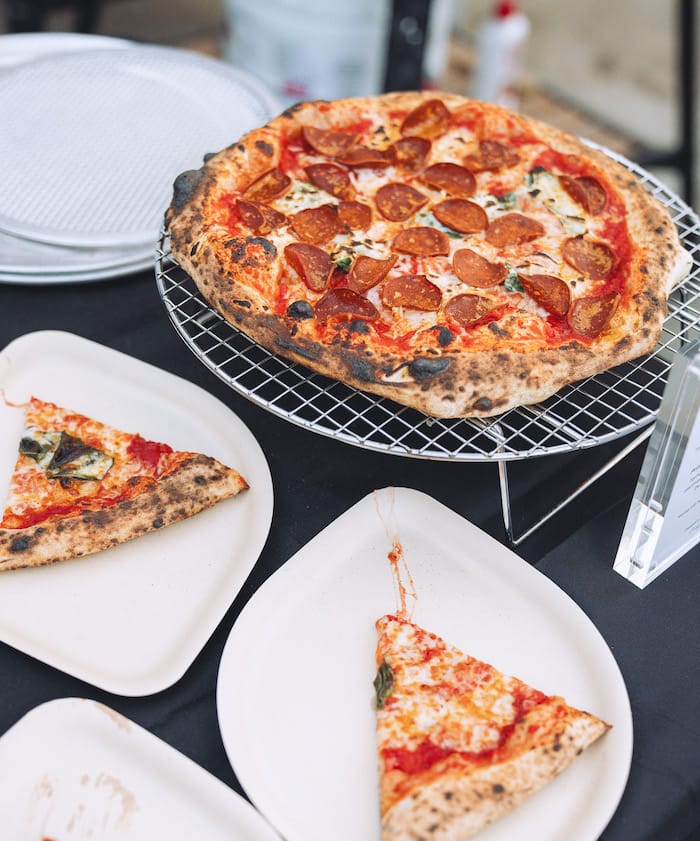
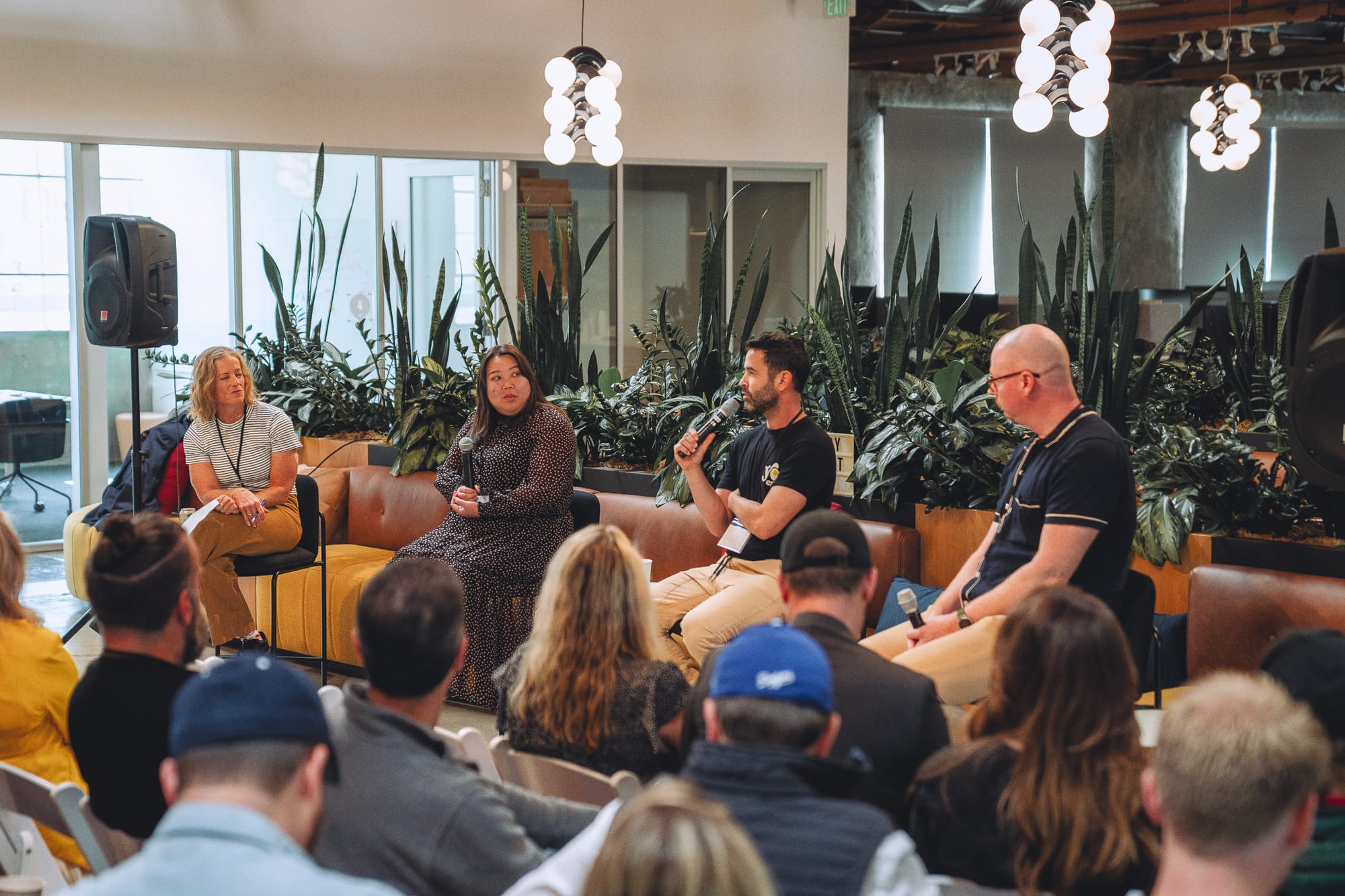
Left: Prime Roots' pepperoni pizza Right: Larissa Zimberoff, Kimberlie Le, Eran Groner, Eric Schulze
Afternoon breakouts: design thinking, smart kitchen, restaurant to retail, outsmarting Amazon
After lunch, I participated in Kevin Kelley’s breakout session titled “Creating Theater Out of Food in the Digital Age.” Kelley is the principal and co-founder of Shook Kelley, an architecture firm that has worked with a wide range of grocery and restaurant clients. Kelley shared a presentation about his work with Hispanic grocery chain Northgate Market for its latest Mercado González project in Costa Mesa, CA. He explained that grocers like Northgate have been experiencing pressure from the likes of Amazon on commodity, center-aisle staples due to the price and convenience offered by its logistics. To combat this, Kelley helped the grocer double down on fresh perimeter items by modeling the store off of a Mexican mercado that eschews fluorescent lighting and packaged food for authentic ‘puestos’ (stalls) that focus on prepared specialty foods. He also added a standalone fine-dining restaurant, bar, outdoor patios, and liquor store focused on Mexican beer and wine.
Kelley asked our group to think about three complementary concepts or brands that should live side-by-side in a grocery store or as multi-tenant retail. Some attendees focused on a brewery combined with food trucks and retail while others brought up the intersection of health and wellness with brands like Equinox and Erewhon. I, however, took the drive-thru route and suggested a hybrid car wash and Dutch Bros Coffee drive thru plus a BBQ joint per my childhood experience in LA. This “rubix cube” exercise of mixing and matching concepts opened up a conversation about the “socialization of retail,” the notion of providing customers with a sense of temporary community in a world of commoditized goods. Kelley cited the example of The Grove LA’s popular outdoor shopping center that features similar stores to any mall, but focuses on building a welcoming Disneyland-like environment around it. In this case, socialization becomes the product, and retail is simply what inevitably happens while you’re doing it. All of this and more is discussed in his must-read book Irreplaceable.
VP of Consumer Brands at Dom Food Group Monika Coyle ran a session about transforming restaurant brands into retail ones. Dom is an incubator behind brands like Goop Kitchen and Cravings by Chrissy Tiegen and prior to that, Monika spent 15 years at Whole Foods, most recently heading up its local brand program. The session talked about the interplay of restaurants and CPG products, posing questions around brand dilution and whether restaurateurs should view CPG as the pot of gold at the end of the rainbow. For example, noma in Copenhagen is transforming its barely profitable fine dining restaurant into an R&D hub for its new line of products under the Noma Projects brand.
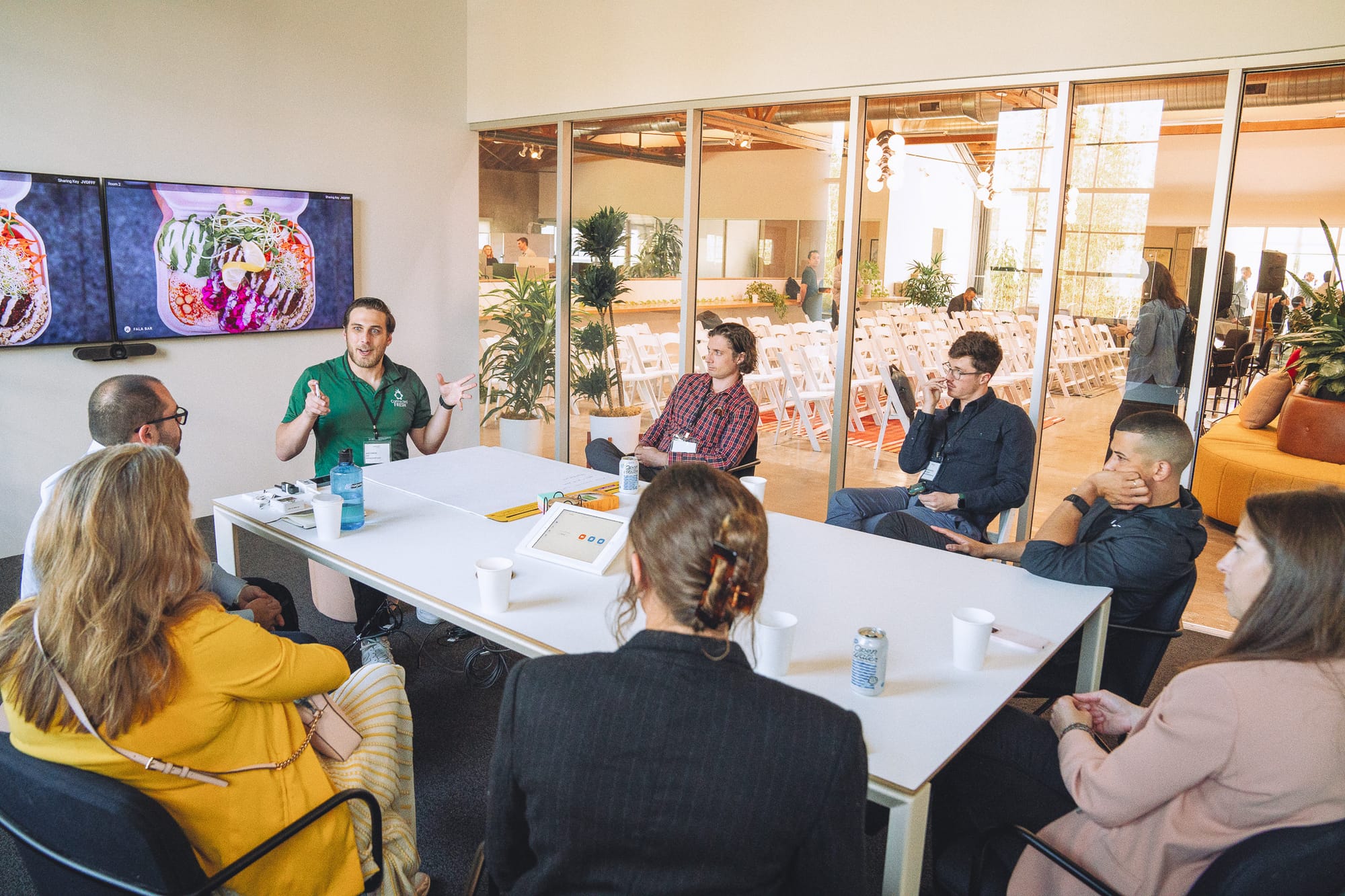
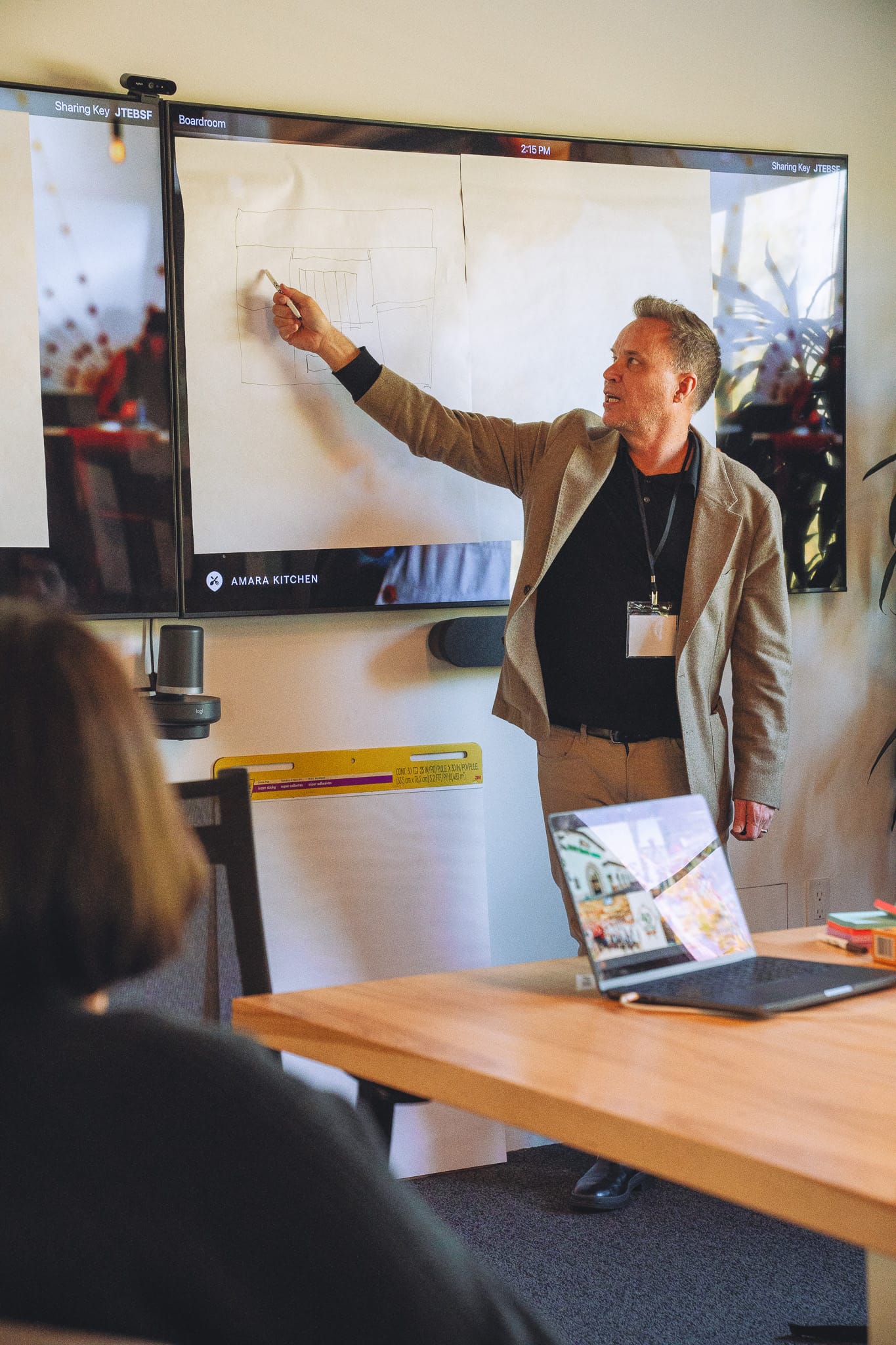
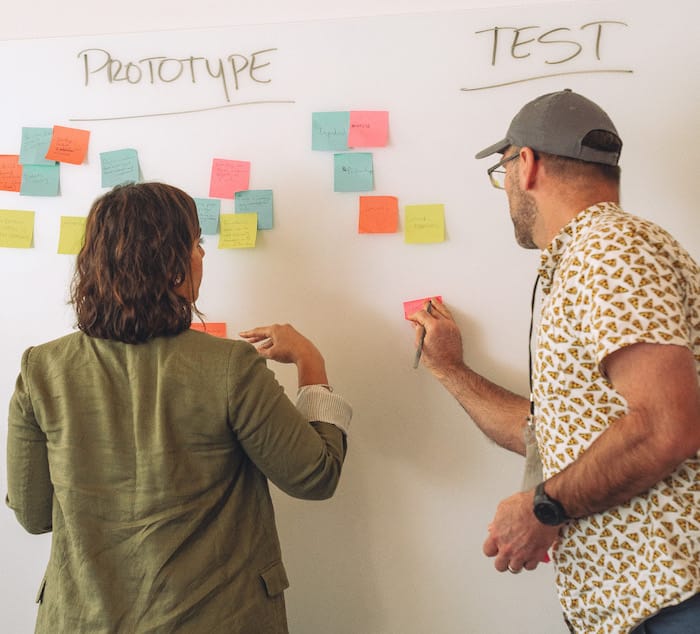
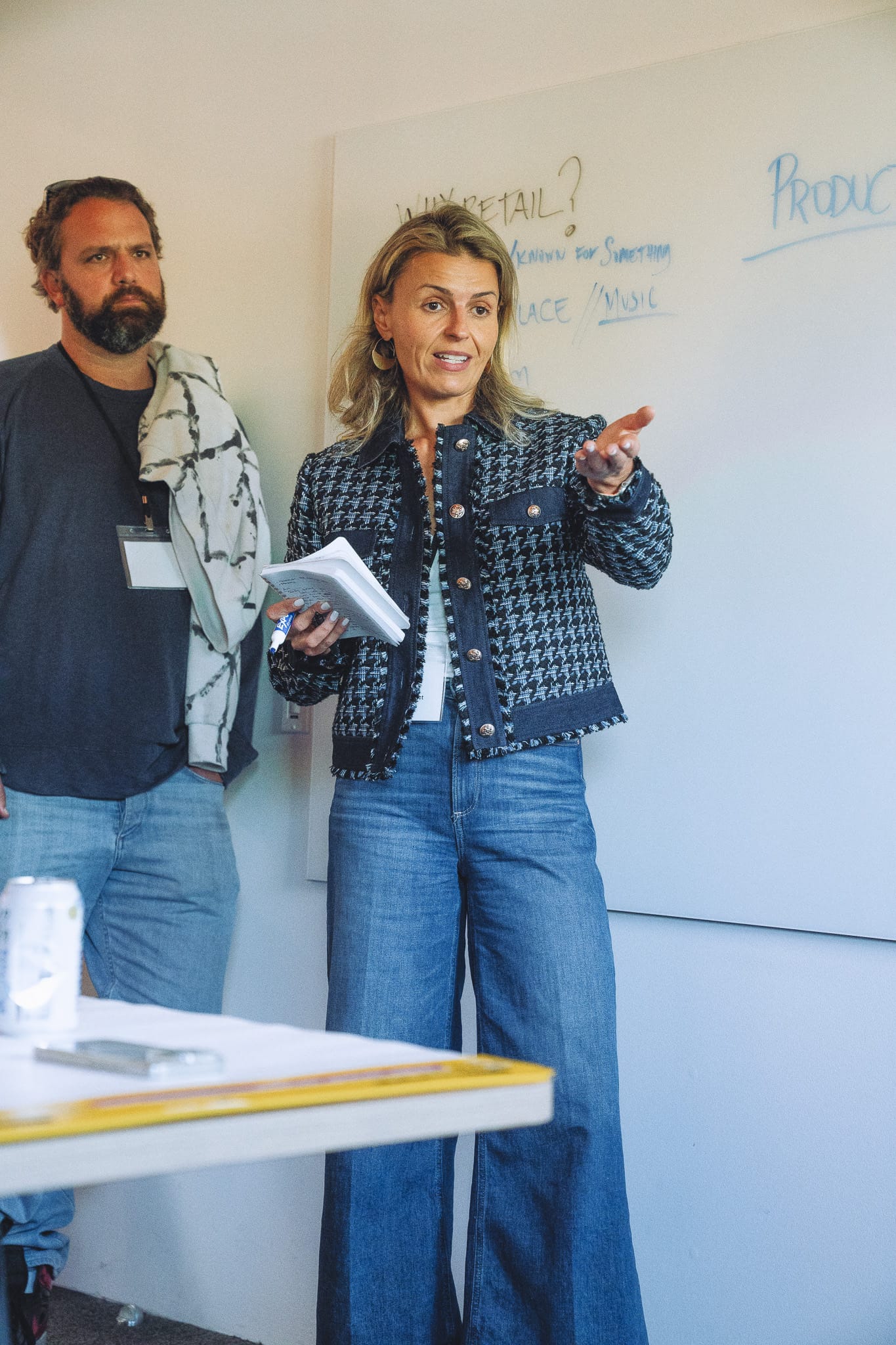
Top: Jake Simon, Kevin Kelley Bottom: Jessica Kapoor, Monika Coyle
The (invisible, cute) robots are coming
Jonah Bliss of Curbivore, Modern Delivery, and OttoMate hosted an afternoon panel on the future of automated kitchens and last-mile delivery with Tim Noonan of Sweetgreen, Chris Kenney of Zipline, and Chris Neider of Starship Technologies. The conversation was divided between Sweetgreen’s new Infinite Kitchen automation and last-mile autonomy with Zipline’s drones and Starship’s sidewalk delivery robots. All three speakers shared the same comments around designing their automation to be invisible and/or cute looking. Starship’s width is about equivalent to human shoulders and Zipline designed a smaller droid that deploys from a larger aircraft above it, quietly placing parcels on customers’ yards. Sweetgreen’s automated assembly line was designed to be a “copilot” for staff, helping them focus on culinary craft. It wants the Infinite Kitchen to be viewed less like a robot, and more like a commercial kitchen appliance that happens to be safer than a traditional makeline thanks to its ability to hold individual ingredients at exact temperatures.
Zipline will begin testing its latest drone system in Dallas, TX later this year and Starship has been deploying its robots on college campuses where it sees higher amounts of customer/restaurant density as well as disposable income. Sweetgreen says it currently operates eight Infinite Kitchen locations, at least one of which was renovated this past summer in NYC. It sees automation less as a way to hire less staff, but rather improve employee turnover while also stabilizing prices and expanding access to its offering at a lower price point. Zipline and Starship also view their services as “expanding the pie” of delivery by opening up new consumer behavior around convenience occasions like getting a pint of ice cream and a Red Bull.
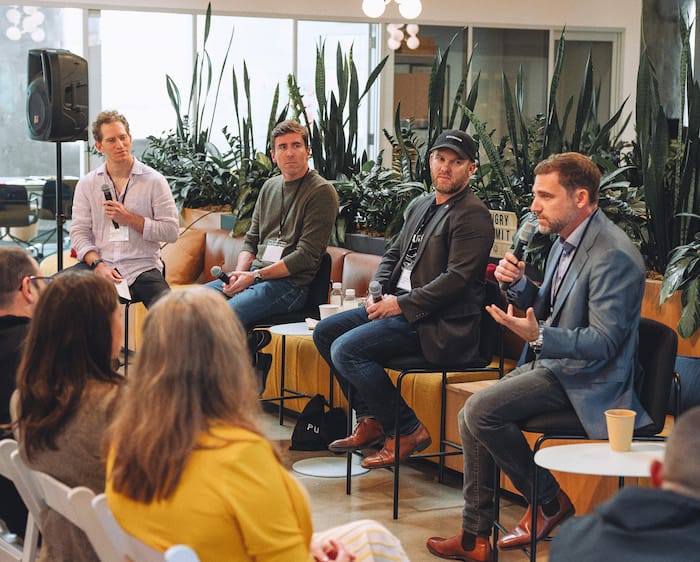
From noma & wd~50 to the freezer
The New Consumer’s Dan Frommer closed out the day with a whimsical 1:1 with August Novelties founder Malcom Livingston II, former Head of R&D and Pastry at noma. The conversation began with Malcom’s culinary background in New York, his journey to Copenhagen, and most recent endeavor as a CPG founder. August is a frozen novelties brand that is sprucing up frozen ice cream treats like bars, soft serve cones, and sandwiches with highly specialized ingredients. In fact, the entire line is non-dairy, non-gluten, and nut free thanks to its base made of Tiger Nut water. The ingredient originates from Spain and Ghana and is a tuber that looks like a striped chickpea and is soaked in water to create a neutral-flavor milk that forms a Haagen-Dazs like ice cream. Livingston was inspired by a 2007 trip to Japan where he discovered a cornucopia of innovative frozen treats found in konbini (c-stores).
Attendees who stayed for happy hour got to experience his current SKUs of Tortilla Chocolate (modeled after a Choco Taco, with inspiration from tortilla chocolate in Oaxaca), Vanilla Strawberry (made with very fancy Harry’s Berries), and Cookies & Cream. The brand is still in alpha mode, and can only be found at a plant-based butcher shop in Highland Park, Los Angeles, for good reason. Malcolm is still in tinker mode but wants to eventually take investment to help scale his brand.
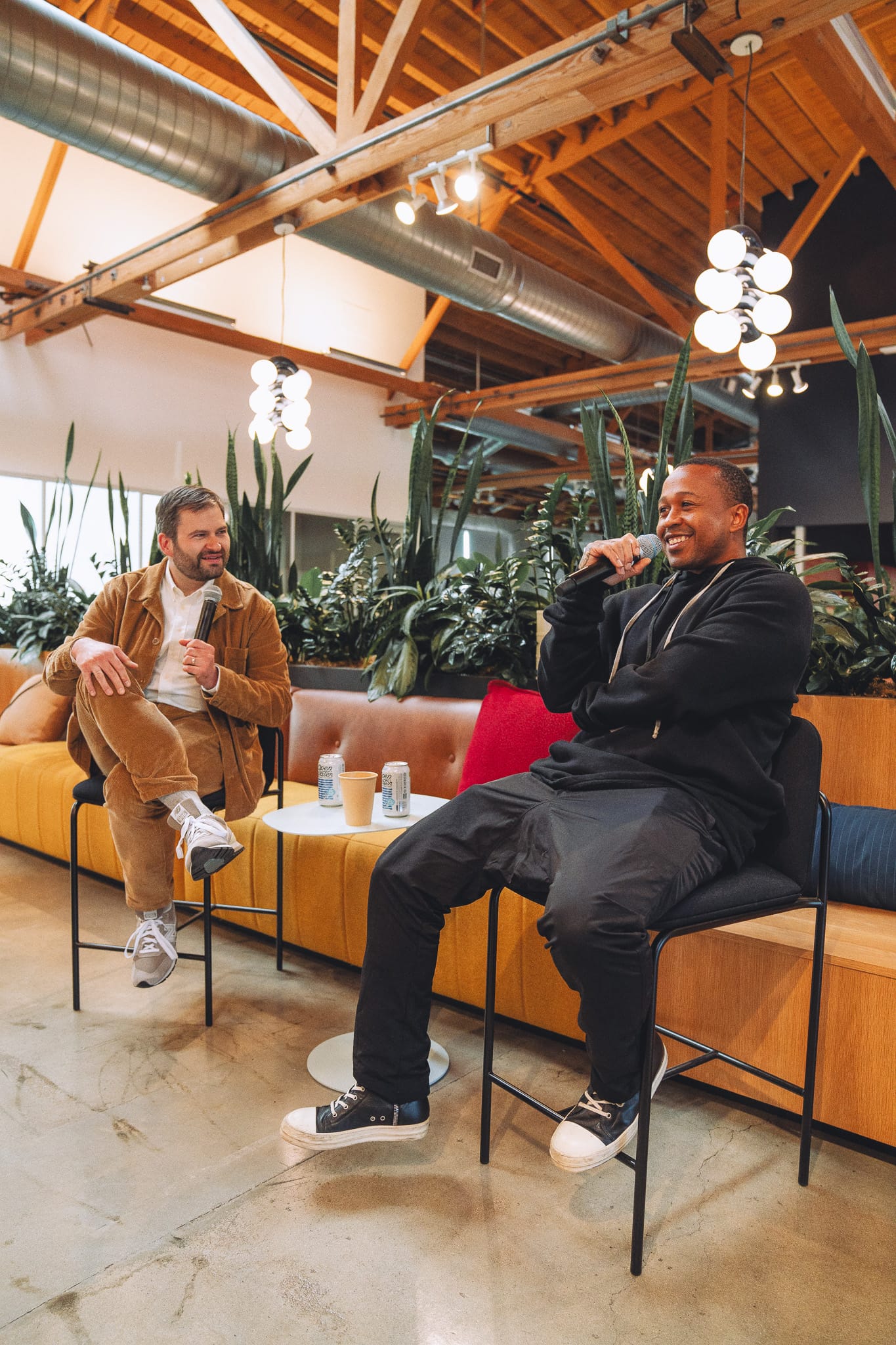
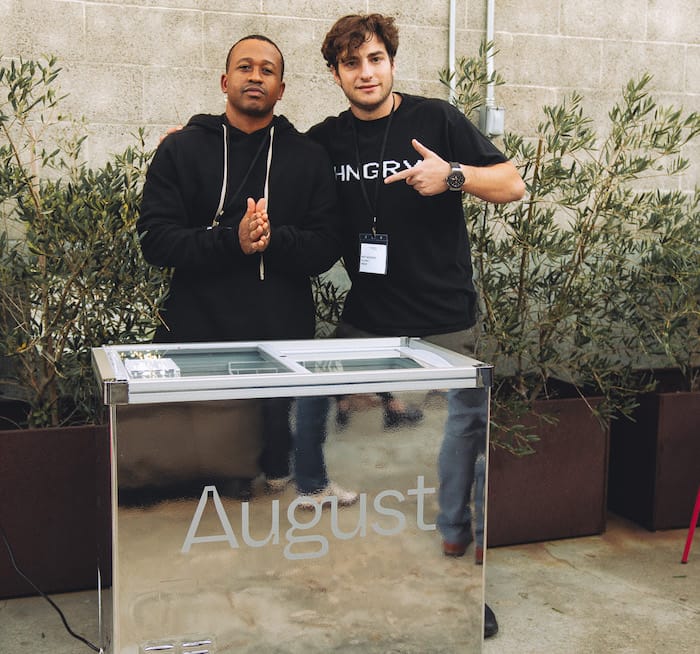
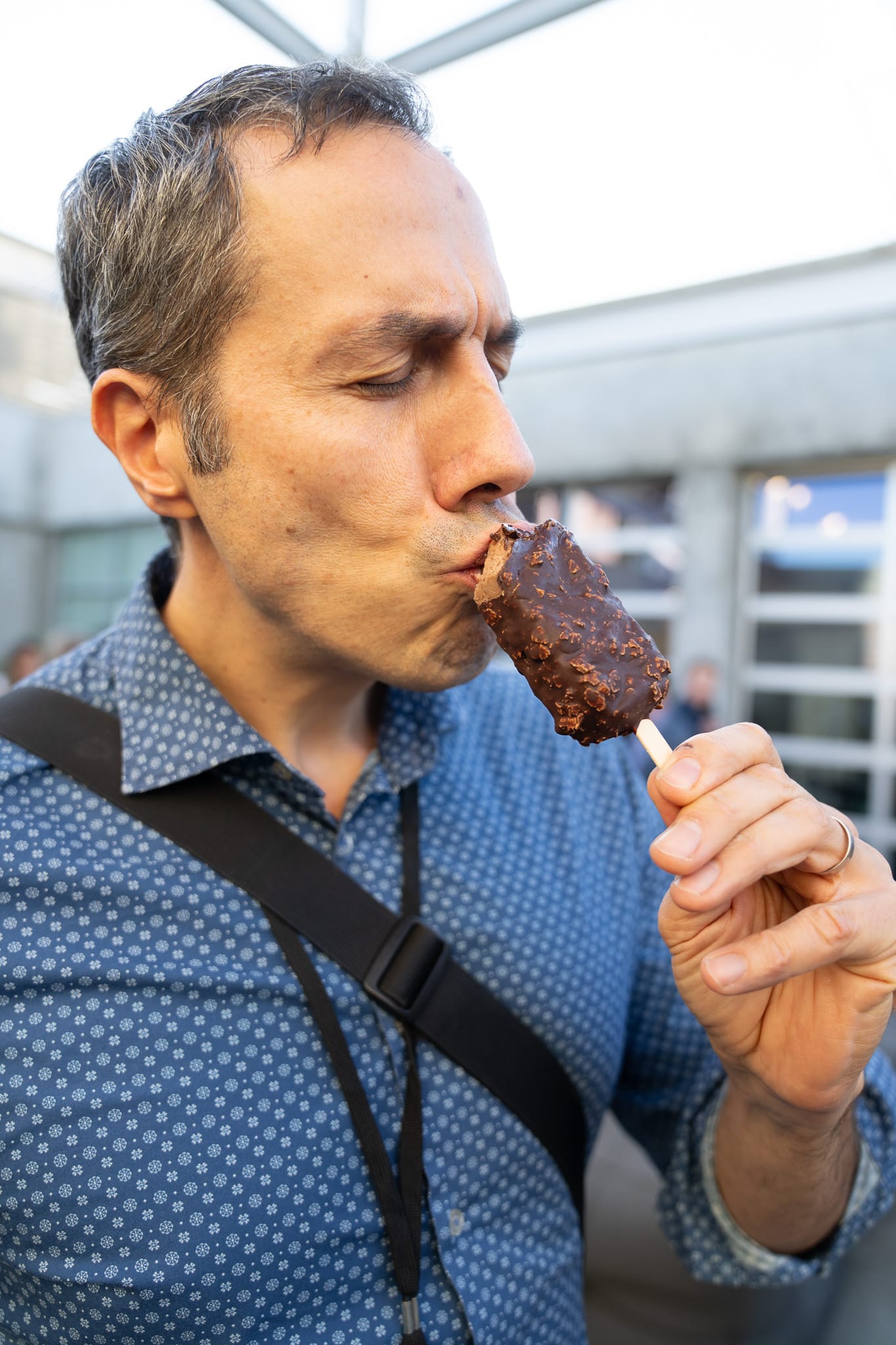
Left: Dan Frommer & Malcom Livingston II Middle: Matt Newberg & Malcom Livingston II Right: Carlos Conde
In conclusion
To anyone who has produced an event, you’ll know how stressful it can be from the planning to the promotion and execution. I’m happy to say this year’s Summit was well worth the effort, and I was able to achieve my dream of building a full 360-degree experience that not only spoke about the future of our industry, but provided actual tastes of it and facilitated interactive discussions around it. Thanks to our tiered pricing for restaurant operators, CPG founders, tech startups, VCs, and corporates, we had a much healthier mix of attendees this year, which was the main goal of the Summit in the first place. There are so many vertical-specific conferences happening across food all year round, but there are few, if any, events that acknowledge the blurring lines between them all. That is what I hope to double down on more in the future, facilitating connection between different nodes in the greater food network.
The real-life neural network of food, now that would be something.








